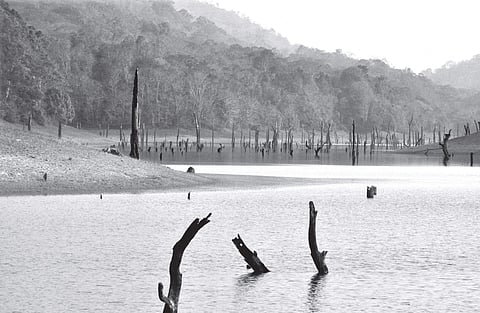

IDUKKI: With the rains continuing to elude the district, especially Kumily which usually receives the highest amount of rainfall, the water level in Mullaperiyar touched a thirty year low.
The water level in the Mullaperiyar reservoir on Saturday was marked at 108.9 cubic feet. It was only back in 1984, the water level in the ages-old reservoir had come down to such a low level. Even at that point of time too, the Mullaperiyar catchment area received scanty rains.
The farmers in Tamil Nadu are bearing the brunt of the phenomenon as they are not being able to draw water from the dam for agriculture purpose these days. The agriculture sector in Tamil Nadu that mainly relies upon the water from Mullaperiyar reservoir is thus affected owing to the climate change.
The Tamil Nadu farmers who had expanded their farming with the Supreme Court ordering to raise the water level in the reservoir to 142 feet are now a miserable lot as they are not being able to take water for irrigation. Farming had been expanded to additionally around 25,000 acres of land in the neighbouring state following the apex court order. In Theni alone, cultivation in 17,000 acres of land is completely depending upon the Mullaperiyar water. Vegetables, grapes and banana are the main items they are growing in these lands. However, it was decided not to use the Mullaperiyar water for irrigation now as five TN districts are relying upon the same for drinking purpose.
On Saturday, Tamil Nadu could draw only 200 cubic feet water per second from the reservoir against the backdrop of thousands of cubic feet water per second it used to draw from the dam. Moreover, Tamil Nadu can draw water from the reservoir only if its water level is over 104 feet. If it touches 104 feet, the neighbouring state would not be able to depend on it till the water level rises.